
In our Today In History Reading List feature, we take the events of a particular day in history and try to give you a work of fiction and a work of non-fiction relating to those events.
1430 Joan of Arc Captured by the Burgundians
During the Hundred Years War, Burgundians, allied with the English, laid siege to the town of Compiegne which was held by French forces lead by Joan of Arc. In an effort to relieve the siege, Joan lead an attack against the Burgundians. Burgundian Reinforcements arrived and forced Joan to retreat. The gates to Compiegne were closed before she and some of her force could get back inside. After several escape attempts she was handed over to the English who tried and executed her.
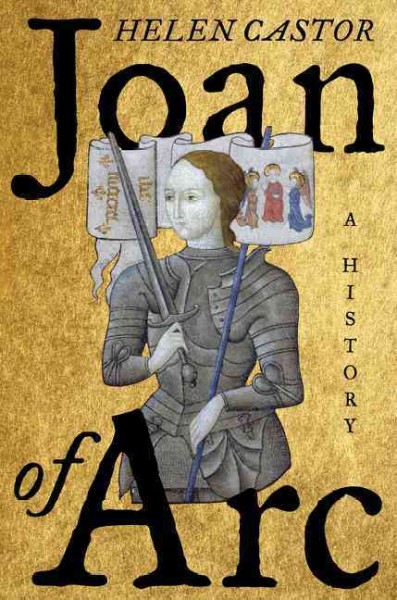
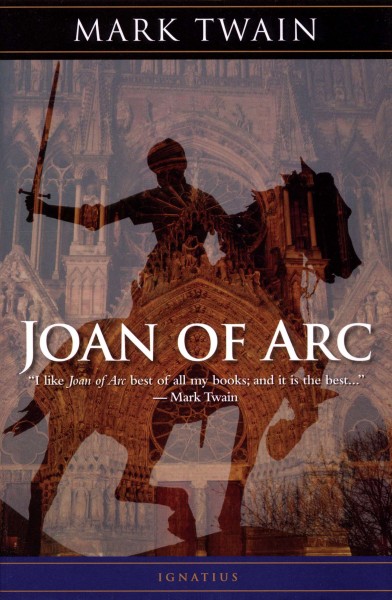
Joan of Arc: A History by Helen Castor.
We all know the story of Joan of Arc. A peasant girl who hears voices from God. A warrior leading an army to victory, in an age that believes women cannot fight. The Maid of Orleans, and the saviour of France. Burned at the stake as a heretic at the age of just nineteen. Five hundred years later, a saint. Her case was heard in court twice over. One trial, in 1431, condemned her; the other, twenty-five years after her death, cleared her name. In the transcripts, we hear first-hand testimony from Joan, her family and her friends: a rare survival from the medieval world. What could be more revealing?
Personal recollections of Joan of Arc by Mark Twain
The novel is presented as a translation (by “Jean Francois Alden”) of memoirs by Louis de Conte, a fictionalized version of Louis de Contes, Joan of Arc’s page. The novel is divided into three sections according to Joan of Arc’s development: a youth in Domremy, a commander of the army of Charles VII of France, and a defendant at trial in Rouen.
1701 Captain William Kidd is Hanged in London
William Kidd was a Scottish sailor who worked as both a pirate and a privater in the later half of the 17th century. A privater was essentially a pirate contracted to the government and allowed to attack the shipping of the enemy and were not considered illegal. However in 1698 while commanding a privater for the British, Kidd captured a ship of questionable legal statues. It was owned by Armenian merchants, captained by an Englishman but with papers guaranteeing safe passage through French territory. Legally speaking it was not a French ship so he had no right to take it. On the basis of this and the murder of one of his crew, Kidd was tried and executed on his return to England.
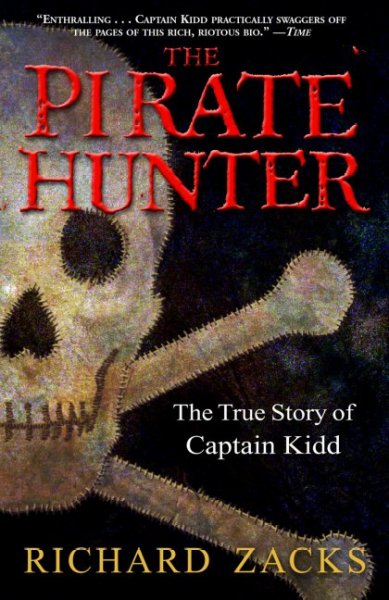
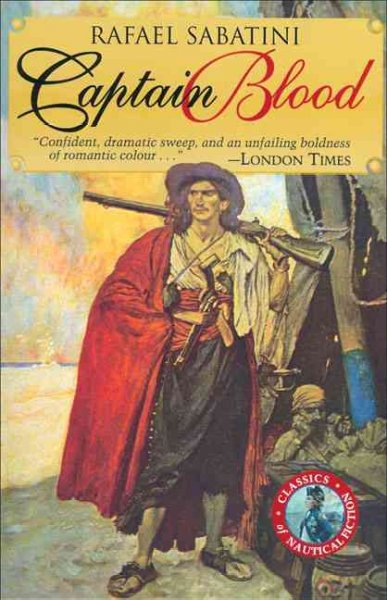
The Pirate Hunter: The True Story of Captain Kidd by Richard Zacks
A literary treasure, The Pirate Hunter is a masterpiece of historical detective work, and a rare, authentic pirate story for grown-ups. Captain Kidd has gone down in history as America’s most ruthless buccaneer, fabulously rich, burying dozens of treasure chests up and down the eastern seaboard. But it turns out that most everyone, even many respected scholars, have the story all wrong. Captain William Kidd was no career cut-throat; he was a tough, successful New York sea captain who was hired to chase pirates. His three-year odyssey aboard the aptly named Adventure galley pitted him against arrogant Royal Navy commanders, jealous East India Company captains, storms, starvation, angry natives, and, above all, flesh-and-blood pirates. Superbly written and impeccably researched, The Pirate Hunter is one ripping good yarn.
Captain Blood by Rafael Sabatini
Peter Blood, an Irish physician and former soldier is happily settled, in the 1680’s, as the doctor in an English town, when the rebellion of the Duke of Monmouth catches him by accident. He saves a man’s life, as a doctor must try to do, but the man is a rebel and the hanging Judge Jeffreys sentences him to ten years as an indentured slave in the Caribbean colonies. Once there, his knowledge as a physician is recognized, and thus he meets and falls in love with the daughter of the man who own his servitude; not likely to be a successful love story! A Spanish ship attacks the town, and while the Spaniards celebrate their victory he boldly steals their ship, and he and his fellow convicts sail off to become the boldest and most fearless of pirates among the islands and on the Spanish Main. But all the glory of his adventures cannot help him, for the woman he loves cannot love a thief and pirate. Even when he destroys England’s enemies, even at his most triumphant…but wait! Is that… The classic novel of adventure and romance, and one of Sabatini’s best.
1873 The Canadian Parliament Establishes the North-West Mounted Police
The North-West Mounted Police were created to provide military, police and legal functions in the Northwest Territory of Canada which made up everything between Ontario and British Columbia. They handled disputes between first peoples and settlers, inforced order during the Klondike gold rush, put down industrial unrest and even sent troops to fight in the Boar War. In 1920 their name was changed to the Canadian Mounted Police of today.
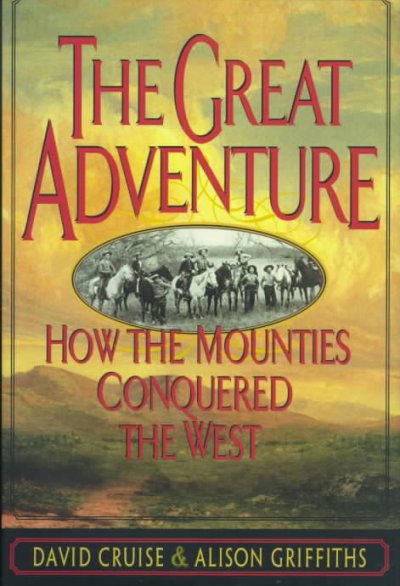

The Great Adventure: How the Mounties Conquered the West by David Cruise and Alison Griffiths
In 1873, an almost impossible mission was accomplished by an improbable posse of recruits. With little training and less experience, 150 men embarked upon a nine-hundred-mile march from civilized Toronto to a trading post at the heart of the wild frontier. Their goal: to penetrate Indian territory, stamp out nefarious whiskey trafficking, and bring order to a lawless land. What they encountered was horrifying and glorious in ways they could never have imagined. Official histories of the march have been largely based on the writings of the first commissioner of the Royal Canadian Mounted Police, and are colored accordingly. David Cruise and Alison Griffiths present an entirely different perspective of this extraordinary event, using such primary sources as diaries and memoirs by the “Mounties” themselves, contemporary newspaper accounts, and other recently discovered materials.
A Lesson in Love and Murder by Rachel McMillan
The legacy of literary icon Sherlock Holmes is alive and well in 1912 Canada, where best friends Merinda Herringford and Jem Watts continue to develop their skills as consulting detectives. The city of Toronto has been thrown into upheaval by the arrival of radical anarchist Emma Goldman. Amid this political chaos, Benny Citrone of the Royal North-West Mounted Police arrives at Merinda and Jem’s flat, requesting assistance in locating his runaway cousin—a man with a deadly talent.
1934 Bonnie and Clyde are Ambushed by Police and Killed
From 1932 to 1934 Bonnie Parker and Clyde Barrow lead a crime spree across the south central United States. They were finally gunned down on a road in Bienville Parish, Louisiana by a posse of six led by Frank Hamer. Hamer had been tracking them for four months and had realized that they always operated near a state boarder to shake off pursuing officers by slipping across a boarder and out of their jurisdiction. However their movements were predictable. Laying an ambush for them on Louisiana State Highway 154 they poured fire into Clyde’s stollen Ford V8 killing them both.
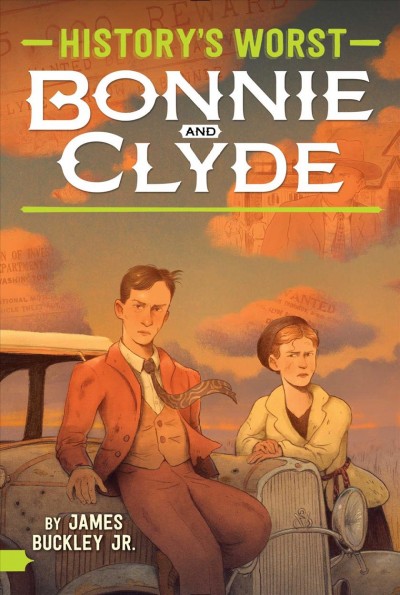
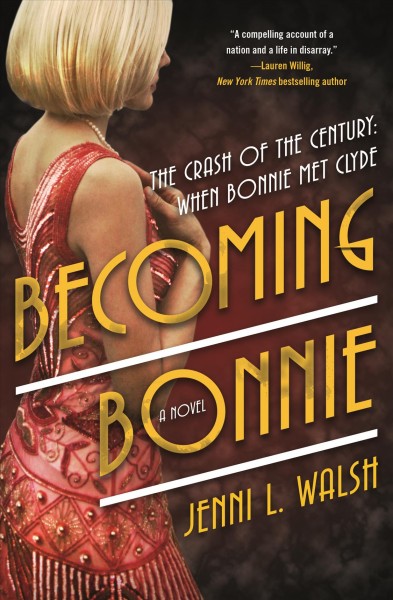
Bonnie and Clyde by James Buckley
Get a behind-the-scenes glimpse of what it takes to be considered two of the worst figures in history, with the third book in this nonfiction series that focuses on the most despicable historical figures. Bonnie Parker and Clyde Barrow are possibly the most famous and most romanticized criminals in American history. When the police found photos of them posing with guns and goofing around, they became media darlings. However, their fame was short-lived, and their lives would end in a violent police ambush. Because the reality was very different. During their 1930s crime spree, the two young Texans and the rest of their gang lived a vicious life filled with narrow escapes, bungled robberies, injuries, and murders. And they weren’t the only gangsters operating at the time. Criminals like Al Capone, Charles “Pretty Boy” Floyd, and “Ma” Barker grabbed their own share of headlines, but in the end it was Bonnie and Clyde who really captured the public’s imagination. A lot of that was because of Bonnie herself. The cute, blonde criminal was unique at the time. There is no question that their story continues to fascinate writers, musicians, visual artists, and filmmakers. But is that fascination justified? Or are we confusing the movie images with reality and ignoring the ugly truth of their story?
Becoming Bonnie by Jenni L. Walsh
From debut historical novelist Jenni L. Walsh, Becoming Bonnie is the untold story of how wholesome Bonnelyn Parker became half of the infamous Bonnie and Clyde duo! The summer of 1927 might be the height of the Roaring Twenties, but Bonnelyn Parker is more likely to belt out a church hymn than sling drinks at an illicit juice joint. She’s a sharp girl with plans to overcome her family’s poverty, provide for herself, and maybe someday marry her boyfriend, Roy Thornton. But when Roy springs a proposal on her, and financial woes jeopardize her ambitions, Bonnelyn finds salvation in an unlikely place: Dallas’s newest speakeasy, Doc’s. Living the life of a moll at night, Bonnie remains a wholesome girl by day, engaged to Roy, attending school, and working toward a steady future. When Roy discovers her secret life, he embraces it–perhaps too much, especially when it comes to booze and gambling–she tries to make the pieces fit. Maybe she can have it all: the American Dream, the husband, and the intoxicating allure of jazz music. But her life–like her country–is headed for a crash. Bonnie Parker is about to meet Clyde Barrow.
